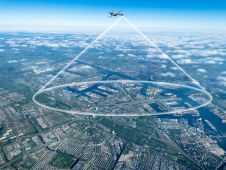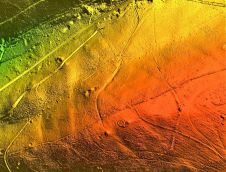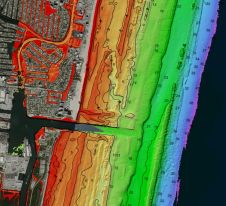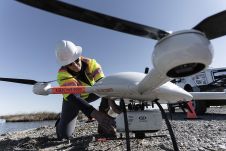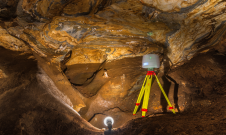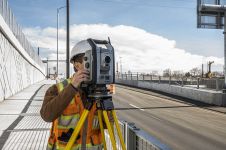Satellite Communications Vital for Africa
GIM International Interviews Paul Thomson, Regional Director, ImageAfrica
Availability of (geospatial) data in Africa always has, and still does represent a bottleneck. Poor communications infrastructure, lack of funds, price of geospatial data and a poor distribution network are just a few contributing factors. To help arrive at an urgently needed solution, ImageAfrica decided it needed to start by being on the spot. GIM International interviewed regional director Paul Thomson in Nairobi, Kenya.
What made you and the United Kingdom ImageAfrica office decide to establish a site here in East Africa?
It was felt that there existed a strong need for a set-up like this, and a huge potential for growth. We are an independent company, resellers for Space Imaging and have full access to all other satellites like SPOT, Landsat, Ikonos, QuickBird, IRS & Eros, ASTER, ENVISAT, MERIS, MODIS and RADARSAT and many more. For aerial imagery we work closely with a local company with good expertise here, so we cover the whole image-market sector. On top of this, we are the representatives for ENVI and IDRISI software. We consider Kenya a stable country and an ideal local hub from which to penetrate the whole region. Besides, a lot of agencies in our field have their offices here, such as HABITAT and UNEP. Our long-term vision is to spread out, with other offices, into various parts of Africa. You must have noticed that we called our company ImageAfrica, not Image East Africa, which indicates our long-term strategies.
Tell us something about the beginning of your operations. When did you start?
We began operations last year and we are offering a so much broader range of services than had ever before been available here. In fact, we are looking at the whole African continent. After East Africa we intend to set up offices in South Africa. We will work there together with CSIR because we have skills that they lack. Our plans for West Africa have not yet been worked out. In Kenya we are in close contact with the Regional Centre for Mapping of Resources for Development and we have established a good working relationship for possible co-operation.
Satellite imagery is expensive and developing countries have many pressing needs; many administrators do not consider imagery as such. From where do you expect developing countries to obtain funding for imagery?
Most satellite imagery demand comes from project-related developments financed by outside sources with donor money, such as the individual governments of donor countries, World Bank, the European Union, United Nations agencies, the African Development Bank and others. Moreover, Africa is a continent that is developing in stages, which leads to the fact that demand for geospatial data will also increase as these economies further develop and much more money becomes available. Some funds will also come from the private sector, like the big, worldwide operating mining houses and multinational agro-businesses. But of course we do not underestimate the challenges here.
What do you contribute, as added value, to the market here and on which do you focus?
I bring to ImageAfrica my expertise of the African continent, having been for twenty years in East Africa alone. My commercial side is important here. We are a small company, thoroughly professional in our approach, and at the moment our actual processing is done in London, UK. There exists a huge requirement for technology transfer in Africa, and accordingly we will work jointly with many universities and regional centres to indeed realise that technology transfer to Africa. We are aiming at agriculture and forestry, risk evaluation and hazards, mineral and water exploration, clients linked to environmental aspects and, last but not least, cartography for utilities and urban planning.
What do you consider your biggest problem here?
Communication – or the lack of a good communications infrastructure, is the biggest problem in Africa in general, not just for our branch of activities. Communication via satellites is the only option if we are to develop to our fullest potential and if we can get broadband via V-sat.
Make your inbox more interesting.Add some geo.
Keep abreast of news, developments and technological advancement in the geomatics industry.
Sign up for free














